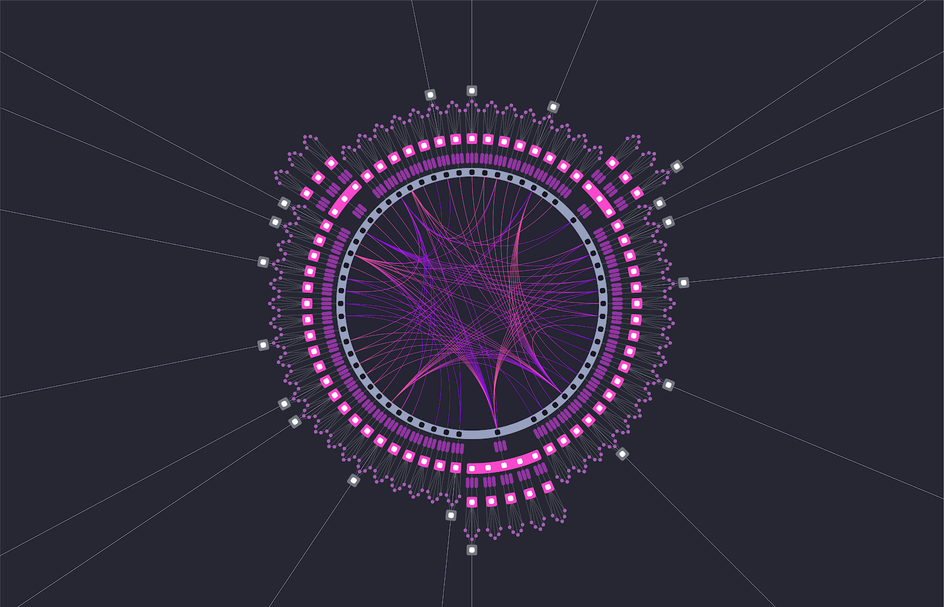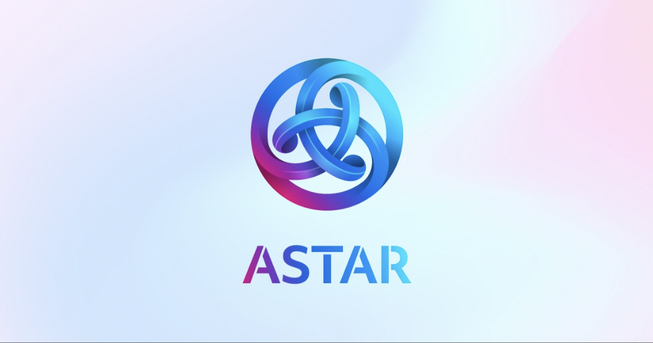Introduction
The Kusama, Polkadot, and Substrate ecosystems have lots of resources to help you get started. Keep reading to learn more and find lots of helpful links.
What is Polkadot ?
Polkadot is a sharded, multichain network founded by Dr. Gavin Wood, the co-founder and former chief technology officer of Ethereum and creator of the Solidity programming language. After three years of design and implementation, Polkadot is currently in the middle of its mainnet launch process that began in May 2020. The Polkadot network is a metaprotocol that solves many challenges that have hindered the growth of legacy blockchains, including scalability, governance, security, and interoperability. Polkadot is a blockchain network fostered by the Web3 Foundation and built by industry-leading developers at Parity Technologies.
What is Kusama ?
Kusama is also a sharded, multichain network founded by Dr. Gavin Wood that is composed of specialized blockchains (parachains) built using the Substrate framework and nearly the same codebase as Polkadot. Kusama is a network built as a risk-taking, fast-moving‘canary in the coal mine’ alongside its cousin Polkadot. In comparison to Polkadot, Kusama’s powerful decentralized governance system moves at a more rapid pace and the network has lower economic barriers to entry. The network is a development environment teams who want to:
1) move fast and innovate exclusively on Kusama
2) fine-tune their tech in preparation for deployment on Polkadot. Kusama’s mainnet was launched in 2019.
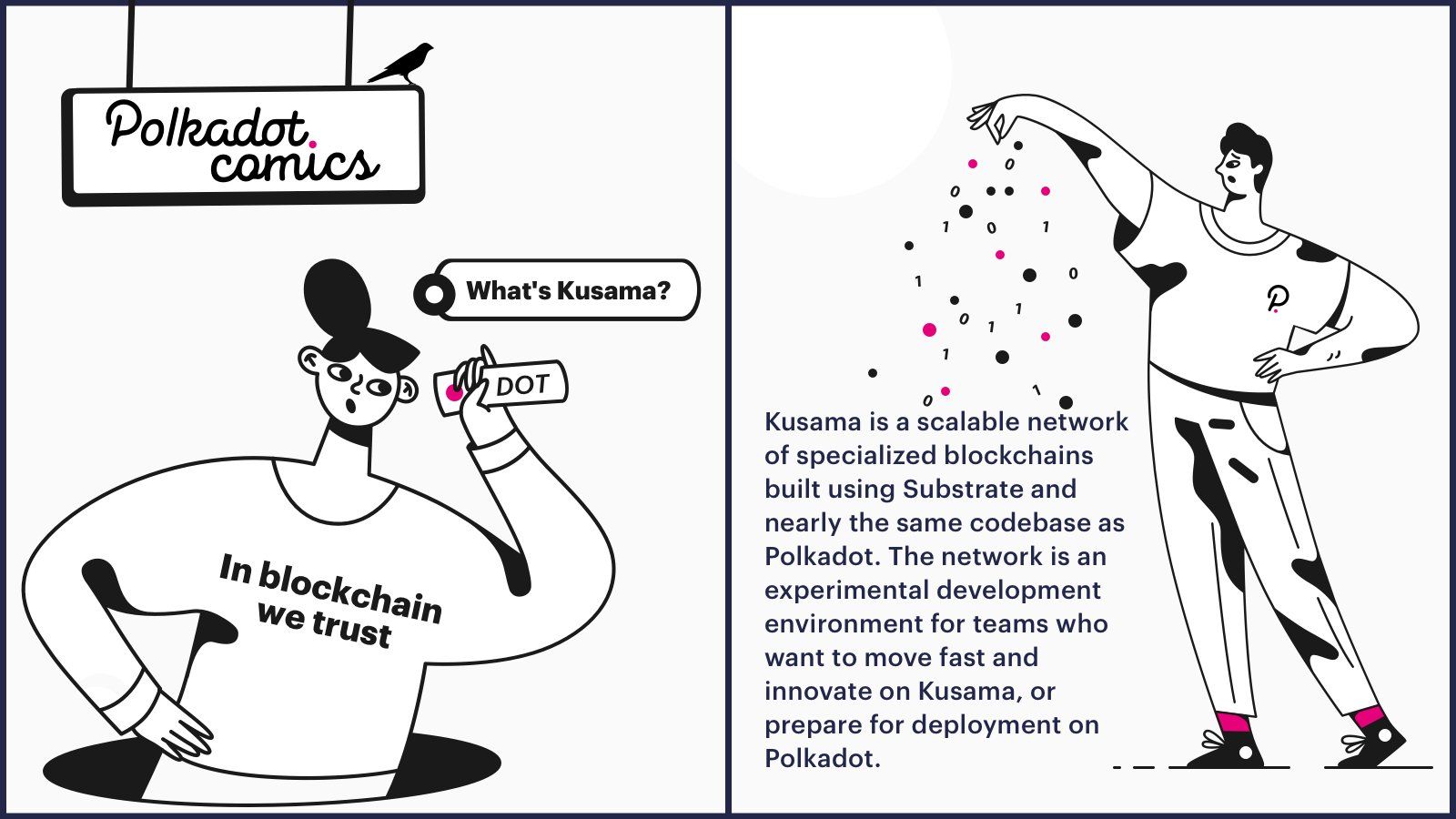
What is Substrate ?
Blockchains in the Kusama and Polkadot ecosystem are built using Substrate. Substrate is a blockchain development framework with a completely generic state transition functional modular components for consensus, networking, and configuration. Despite being “completely generic”, it comes with both standards and conventions, particularly with the Substrate runtime module library (FRAME). FRAME makes rapid development of purpose-built blockchains a reality by providing developers with a flexible library of carefully designed blockchain building blocks. Cumulus (under development), a tool foreasily connecting your blockchain to a network of blockchains, unlocks interchain communication, collaboration and shared security on the Kusama and Polkadot networks.What are Web3 Foundation and Parity Technologies?
Differences between Polkadot and Kusama
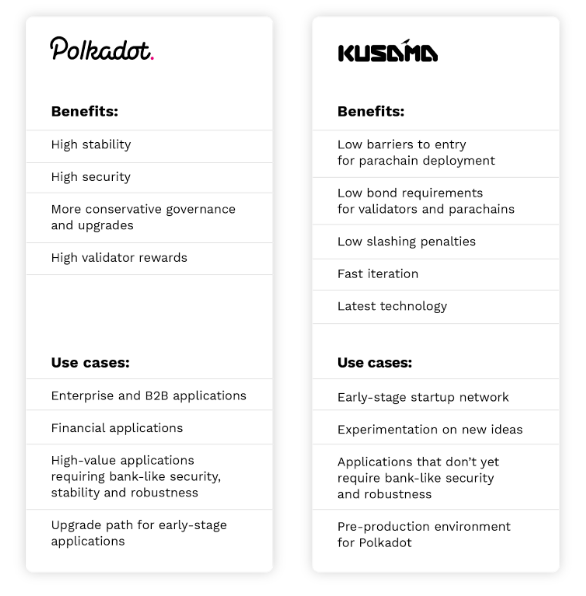
Hackusama
I’d like to invite you to join a seven-week online hackathon, called Hackusama, hosted by Kusama Network with a prize pool worth $30,000 in addition to a host of extra prizes, including devices for the winners from the Hackusama sponsor, Ledger. Kusama is a network built by Dr. Gavin Wood, Polkadot founder and cofounder and CTO of Ethereum. The network is a development environment for teams who want to move fast and innovate on Kusama, or prepare for deployment on Polkadot. Hackusama is being launched for developers to “Build a Blockchain” or submit their wildest tools, visualizations, and ideas to the “Open Hack” category. The event will run until August 14th and also features a series of webinars with amazing guest speakers like Ledger, UNICEF, Berkeley Blockchain, Wanxiang, and more
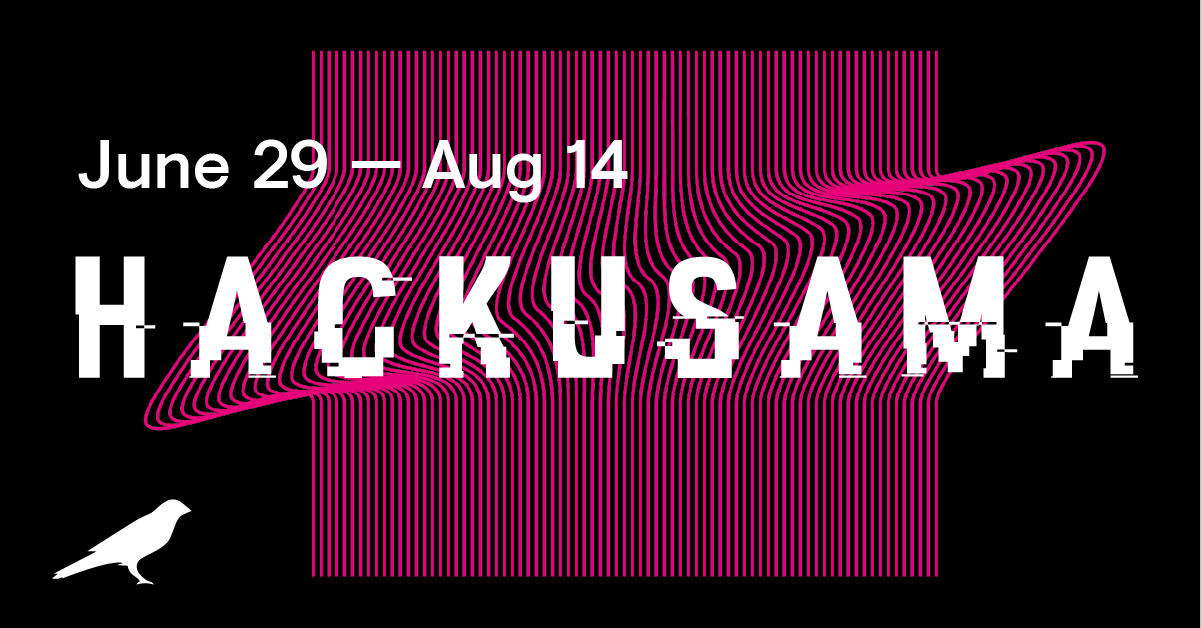
Hackathon Categories and Ideas
Gaming Chain
In this category, you are challenged to build a custom blockchain using Substrate. In the near future, your chain will have the ability to plug intothe Kusama Relay Chain for interoperability and plug-and-play security. Theideas below are meant to inspire you. We hope you are creative and build thecustom chain you believe will be most useful to the other builders in the Kusamaecosystem!
Games can be defined as state changes between two or more parties withadditional pre-defined rules. Our vision of an ideal gaming chain isn’t onewhich can support slow two-player turn-based games (that problem has beensolved), but a chain which is abstract enough to go from chess and battleshipto almost real-time rogue-like games with many players in the same world. Aproduct of this category will ideally be an abstract chain on whichdevelopers/entrepreneurs can launch a game seamlessly into the multiverse, build a sports booking & esports tournament platform, fundraise for games, andenable game developers to receive fair distribution. Functionality couldinclude all or some of the following features:
● Multi-Token Standard (ERC1155) implementation.
● Swap or exchange protocol for ERC1155 tokens (e.g., Uniswapmodified for ERC 1155)
● Onchain/Off-chain(e.g. IPFS) metadata deployment and hostingtools
● Stablecoin Integration (Acala, Bandot)
● Transaction & Integration API for JS/Unity-based games
DeFi or Stablecoin Chain
Decentralized finance is the reimagining of traditional financial services on the trust-minimized backbone of the blockchain. One example of DeFi includes loans and interest-bearing positions such as in MakerDAO’s collateral debt positions system that allows users to take loans out against themselves as counterparties. Another example is a synthetic asset protocol that allowsusers to create stablecoin positions or derivatives. For Kusama, DeFi canexist on its own parachain by creating an optimized implementation or acrossparachains by composing a protocol on top of lower-level primitives and usingXCMP for interoperability.
● Stablecoins are cryptocurrencies that have lower volatility that are oftenpegged to the value of a reference asset (such as the USD). There aredifferent designs for implementing stablecoins by using algorithmic stablecoindesigns such as Schellingcoin or by making synthetic asset designs. A Kusamastablecoin could be similar to one of these or something completely originaland new.
● Other ideas in this category include a stablecoin savings account (e.g.Dharma), an insurance layer for DeFI (e.g. Opyn), a Business-to-businesspayment platform (e.g. Veem), a Fast Payments chain, or a recurringsubscription payments implementation, or a Non-custodial exchange thatintegrates with any custody solution and allows users to trade with oneanother without giving up control to a third-party custodian.
Privacy Chain
Blockchains are transparent by nature, all of the transaction history isvisible for everyone to see. For some applications, stronger privacy needs toexist. On Kusama, privacy can be integrated as its own parachain by usingcryptography such as zkSNARKs, STARKs, ring signatures, or other methods ofhiding information on chain. It could also be possible to create privacy onthe protocol or network level by coming up with designs to hide node or validator identities. The minimum functionality that a project would includehere is the ability for users to be able to privately transact value in theKusama or Polkadot ecosystem. Different designs are possible but the mostuseful design would be a parachain that would allow private transactions witharbitrary Substrate tokens.
DAO Chain
Description: A DAO, or Decentralized Autonomous Organization, is ablockchain application which allows members of a community tocollectively come to agreements on certain decisions in that DAO. Aragonis the most famous DAO framework in the Ethereum world. It allows one tolaunch a DAO in a few clicks, add new applications into it (likedifferent modes of voting or financing) and permits members to initiatevotes for actions executed both inside the DAO, and as the DAO towardsexternal smart contracts (i.e. the DAO can invest in DeFi, therebyearning interest on its membership fees). A Kusama DAO chain would allowfor a modular DAO framework with basic modules available out of the box,and would make it easy for users to plug their own custom modules intothe DAO at will. Whether this is better done through smart contracts orWASM modules which require governance, is up to the developer, but theessence of a DAO is its ability to programmatically interact with otherDAOs on the same chain - interoperability of governance is the new wayto think about digital nation states.
Smart Contract Chain
Smart contracts chains are sandboxed execution environments for small piecesof code that can be permissionless deployed by other developers. Substrateprovides a Wasm-based smart contract module and Kusama will definitely need animplementation of this to deploy a live parachain. Some specific ideas couldinclude smart contracts in other languages like assemblyscript andparticularly languages for which there are existing toolchains. What would aperfect smart contract chain look like to you?
Content, Social Networking, or Storage Chain
A content or storage chain would focus on everything from a decentralizedversion of Github and taking ownership of one’s personal data, to hostingunstoppable and censorship resistant websites. Social networks with privacybuilt-in, decentralized email platforms, next-gen torrents, all this should bepossible by integrating a substrate chain with protocols like IPFS or Storj. AKusama storage chain would be demonstrating a real need for decentralizedstorage, not just storing things for the sake of it. Alternatively, it would be an abstract chain for fee-based reads/writes that others could connect toas easily as to AWS S3 buckets. This could include integration with IPFS,Storj, etc.
Open Hack
In this category, we want you to push the limits of what’s possible. Becreative, break things, make us laugh, make us cry. Test suites, visualizations,Wasm interoperability, and everything in between qualifies for this category.Shock us with your brilliance.
● It is currently not very straightforward to write automated tests - like thoseavailable with Truffle or Embark in Ethereum - for blockchain-specificfunctionality on substrate-based chains. A test suite would allow one to seed thesuite with test wallets and execute the state tests in a deterministic fashion.The output should be a comprehensive list of both problems and suggestions on howto fix them, if known. Ideally, the error fixing process would be a crowdsourcedeffort with up until then unseen errors automatically being turned into a newcategory on a central repository of problems and recipes.
● Block production visualizer: Got an idea for an interesting, insightful andbeautiful way to visualize the growth of the Polkadot relay chain? Great! Bonuspoints if it allows easy block exploration, finalization, validator data,temporary forks, or other information related to block production on Polkadot.
● Block explorer: If you have a great way to explore the historical blockchainstatus, here’s your chance to show it to the world.
● Validator visualizer: Dazzle us with your approach to dynamically displayinginformation about validators – things like their identifying information,address, era points, or which blocks they produced. You could rank them by thenumber of blocks produced, or the length of time that they’ve been part of theactive validator set. Get creative!
● Nomination visualization: In Polkadot, validators are generally nominated byothers to get into the active validator set. We imagine this as a giant graphwith some nodes being validators, a much larger number being nominators, andconnections between nominators and their selected validator(s). Share your visionof how this could be displayed to show users the current state of the nominationecosystem.
● Token Distribution Graph: Show us how you would display the way Polkadot tokensare distributed amongst different accounts.
● Account information visualizer: Get inventive with a single page that givesrelevant information about the user – any on-chain identity, tokens held, whomthey are nominating, if they are validating, account age, previous votes onreferenda, proposal submissions, or any other information about an individualaccount.
● A relay chain clock: Maybe it beeps every time a certain number of blocks go by,or a cuckoo comes out once every 100 blocks? Got a better idea?
● Throughput visualizer: Show how many transactions are being processed on therelay chain and, once they’re enabled, on the parachains. Or show how manytransactions are in the transaction pool. Your choice.
● Burner Wallet: You enter your password once when starting to use the app, whichthen allows you to interact with the app without entering a password for the restof the session. Huge improvements to UX. A burner wallet can take a private keyin localstorage or via GET and create a temporary wallet.

